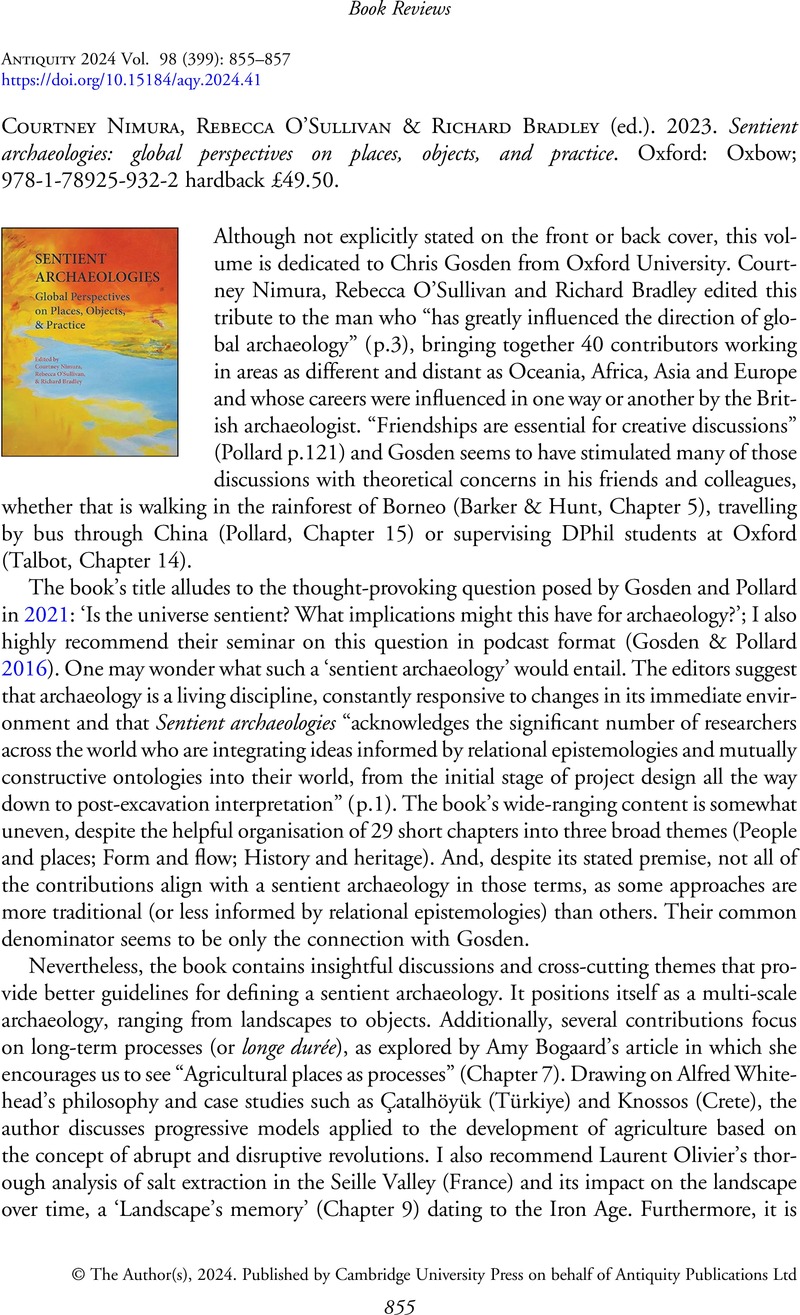No CrossRef data available.
Article contents
Courtney Nimura, Rebecca O'Sullivan & Richard Bradley (ed.). 2023. Sentient archaeologies: global perspectives on places, objects, and practice. Oxford: Oxbow; 978-1-78925-932-2 hardback £49.50.
Review products
Courtney Nimura, Rebecca O'Sullivan & Richard Bradley (ed.). 2023. Sentient archaeologies: global perspectives on places, objects, and practice. Oxford: Oxbow; 978-1-78925-932-2 hardback £49.50.
Published online by Cambridge University Press: 25 March 2024
Abstract
An abstract is not available for this content so a preview has been provided. Please use the Get access link above for information on how to access this content.

Information
- Type
- Book Reviews
- Information
- Copyright
- Copyright © The Author(s), 2024. Published by Cambridge University Press on behalf of Antiquity Publications Ltd
References
Gosden, C. & Pollard, M.. 2016. Is the universe sentient, and what implications might that have for archaeology? University of Oxford Podcasts. Available at: https://podcasts.ox.ac.uk/universe-sentient-and-what-implications-might-have-archaeology?audio=1 (accessed 5 December 2023).Google Scholar
Gosden, C., & Pollard, M.. 2021. Is the universe sentient? What implications might this have for archaeology?, in Boyd, M. & Doonan, R. (ed.) Far from equilibrium: an archaeology of energy, life and humanity: a response to the archaeology of John C. Barrett: 313–26. Oxford: Oxbow.CrossRefGoogle Scholar

